Hens and chicks (Sempervivum) are delightful, easy-care succulent plants that add character to gardens and homes. Learn how to grow and care for these hardy, geometric rosettes.
Do you want to add some fun, low-maintenance plants to your garden or home? Consider growing hens and chicks! These charming little succulents are perfect for adding texture and interest with their tight geometric shapes and vigorous growth habit.
Here’s a concise information chart about hens and chicks:
| Attribute | Information |
|---|---|
| Botanical Name | Sempervivum spp. |
| Plant Type | Succulent perennial |
| Zones | 3-8 (varies by species and cultivar) |
| Exposure | Full sun to partial shade |
| Bloom Time | Summer |
| Height/Spread | Height: 3-6 inches Spread: 6-12 inches |
What are Hens and Chicks?

Hens and chicks (Sempervivum) are a classic type of succulent that gets its name from how it grows. Each plant consists of a central rosette (the “hen”) that is surrounded by a group of smaller offsets (the “chicks”). Over time, the chicks develop their own chicks, allowing the plant to steadily multiply and spread.
These tough plants are characterized by their fleshy, evergreen leaves arranged in a tight spiral rosette pattern. The leaves come in a wide range of colors like green, blue, purple, red and more. Many varieties also develop a burgundy or purple coloring in bright sunlight.
In summer, hens and chicks send up short stems with clusters of small, star-like flowers in shades of pink, white, yellow or red depending on the variety. After blooming, the “hens” often die off but are replaced by the surrounding “chicks”.
Native to the rocky mountainous areas of Europe, hens and chicks are incredibly hardy, able to survive cold winters, heat, drought and poor soils. With over 40 species and hundreds of hybrids and cultivars available, there’s an amazing diversity within this group of succulents.
Benefits of Growing Hens and Chicks
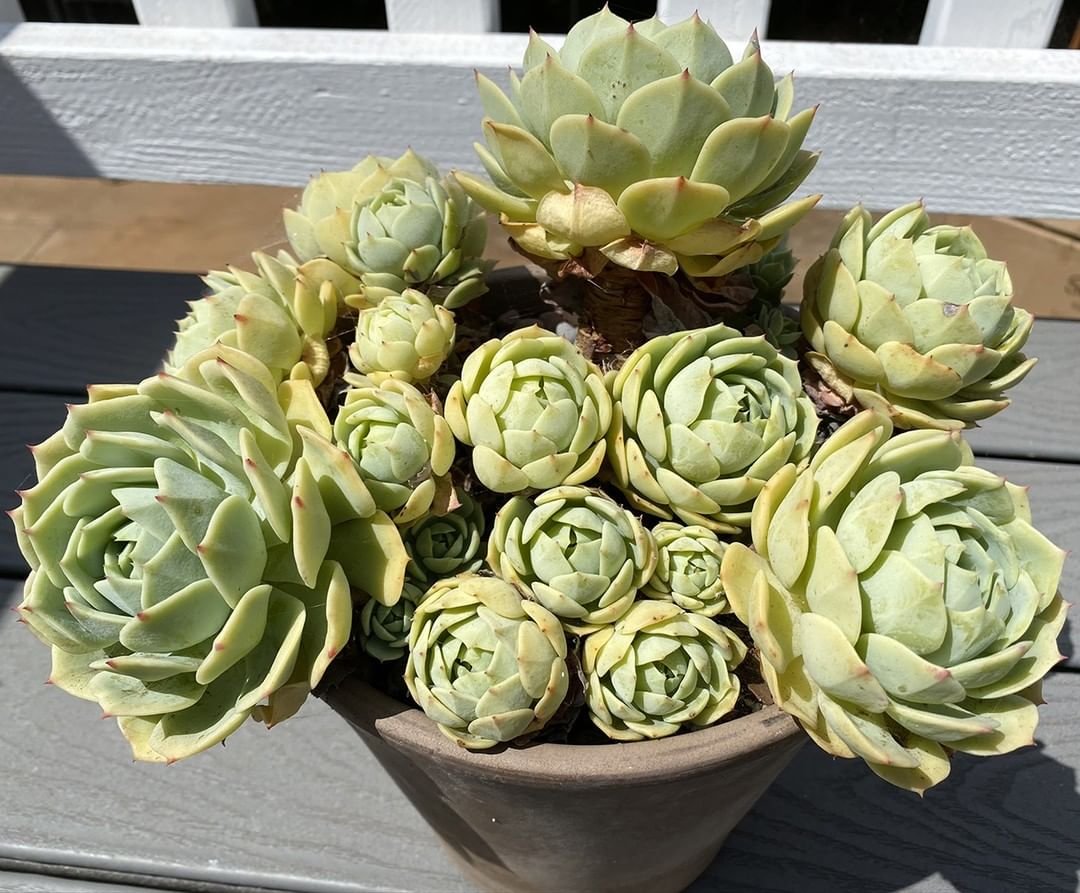
Hens and chicks offer gardeners numerous advantages as easy-care, low-maintenance plants, including:
- Drought-tolerant once established
- Hardy down to USDA zone 3 or 4
- Not favored by deer or rabbits
- Add texture, form and color year-round
- Self-propagating by producing offsets
- Require little water, fertilizer or care
- Can be grown indoors in containers
- Non-invasive, clumping growth habit
With their geometric shapes, succulence, and vigorous self-propagation, hens and chicks bring a sense of fun and whimsy to gardens and patio containers. The fact that they’re so low-maintenance is an added bonus!
Planting and Growing Hens and Chicks
Site Selection and Soil Preparation
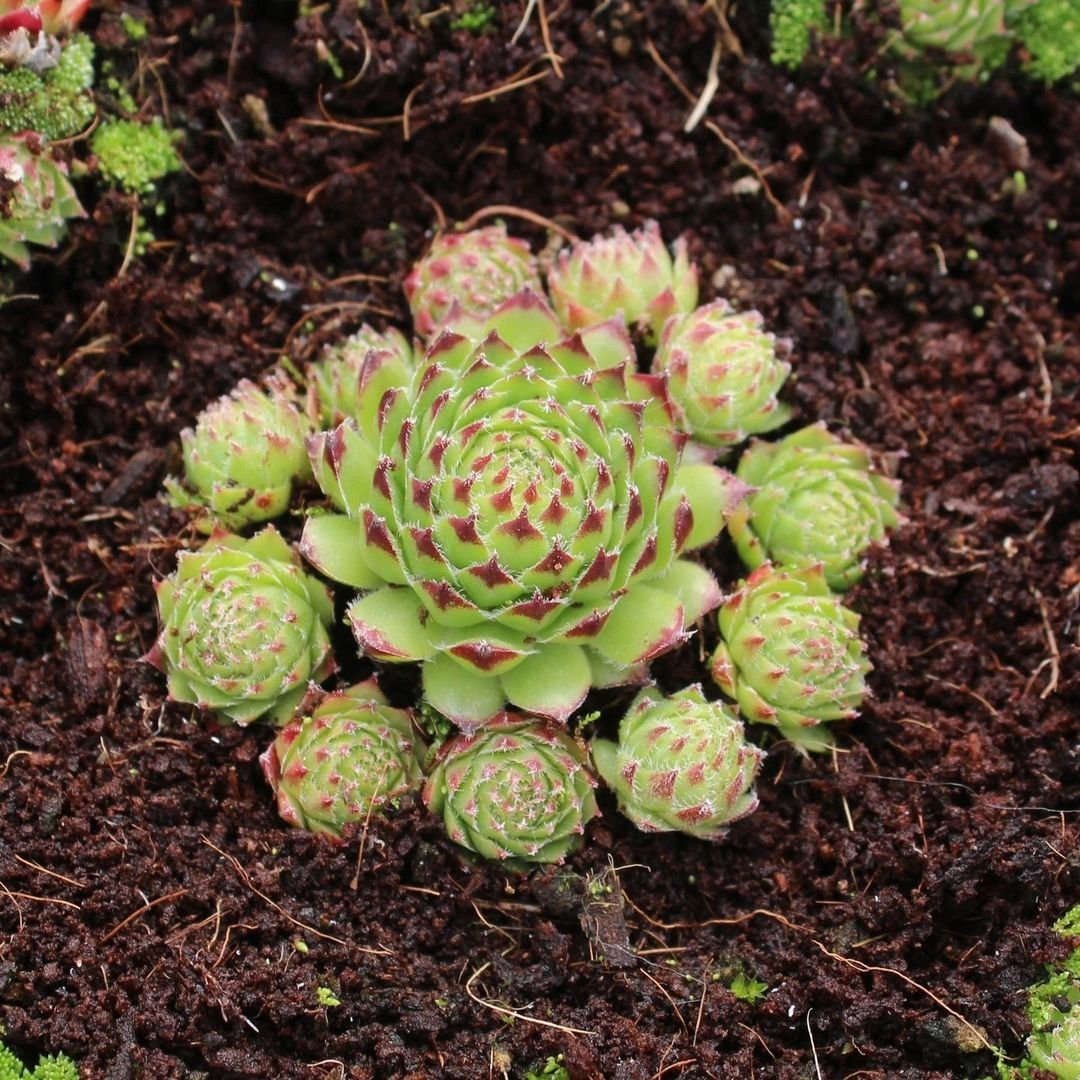
Hens and chicks need at least 6 hours of direct sunlight per day to achieve their full vibrant coloring. In hot climates they can tolerate partial afternoon shade.
These succulents aren’t fussy about soil as long as it drains very well. Overly rich or moist soils will cause rot. Plant them in average, well-drained garden soil amended with pebbles, gravel or coarse sand to improve drainage. Gritty cactus/succulent mixes also work well.
For the neatest appearance, plant hens and chicks about 6-12 inches apart or space them closely together to create a dense mat. Gently loosen the roots and set the plant at the same soil level as it was previously growing. Fill in around the rosette with soil tamping it lightly firm.
Water in thoroughly after planting to help settle the soil around the roots. Provide consistent moisture that first season to get them established.
Caring for Hens and Chicks
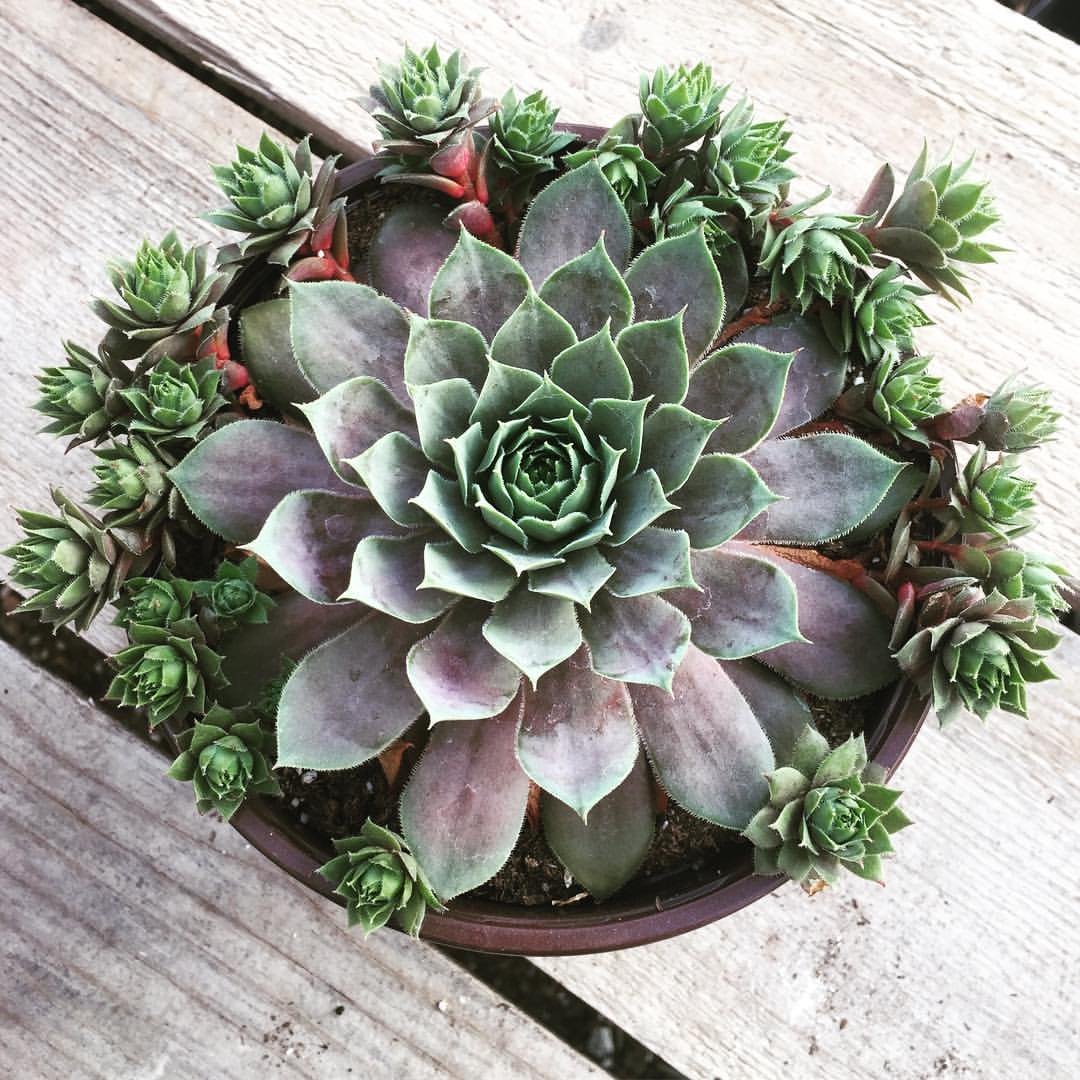
After that initial establishment period, hens and chicks need very little supplemental watering or care. Their succulent leaves allow them to survive with little moisture once the plants are drought-acclimated.
In the summer months, give mature plants a deep soaking only when the soil is completely dried out if rain has been lacking. Apply water directly to the soil surface, avoiding overhead watering as much as possible.
In fall, reduce watering as the plants start going semi-dormant over winter. Only provide sporadic moisture when temperatures are above freezing over the winter months if conditions are very dry.
During the growing season, you can apply a balanced balanced fertilizer once or twice, scratching it lightly into the soil around the base of plants. However, too much fertilizer can cause overly lush, floppy growth.
Hens and chicks spread by producing offsets around the base of the parent plant. These can be easily pulled or cut apart once established and replanted elsewhere for propagation. Dig and divide overgrown clumps periodically to maintain them.
Some gardeners like to remove spent flowers once they’re done blooming. However, leaving the stalks alone allows the plant’s energy to direct back into offset production. You can prune off any dead rosettes at the end of the season when new offsets are firmly established.
In colder climates, it’s a good idea to provide protection from winter moisture by covering plants with a frost blanket or cold frame. Wet snow can cause rot or disfigure the tight symmetrical rosettes.
Common Problems with Hens and Chicks
While typically problem-free, a few potential issues to watch for include:
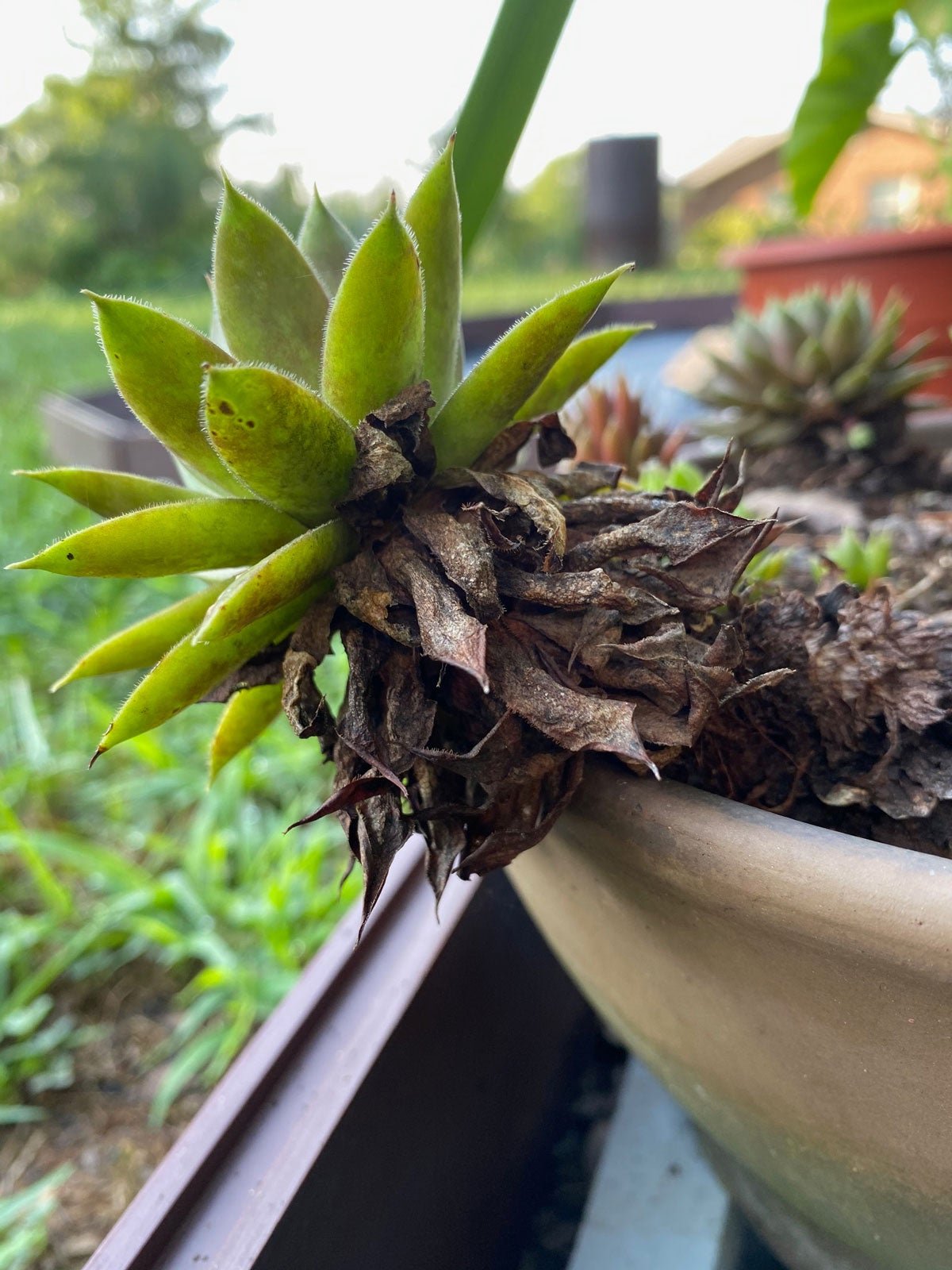
Rot – Overly wet, poorly drained soils and excessive moisture can cause rotting, mushy leaves at the base of plants. This is the number one killer of hens and chicks. Fix drainage and allow plants to dry out between waterings.
Extreme heat – Temperatures over 100°F along with intense direct sun can scorch leaves, especially in dry conditions. Provide some afternoon shade.
Pests – These plants have virtually no pest issues due to their thick leaves and toxic sap. Black fungus gnats are about the only occasional pest.
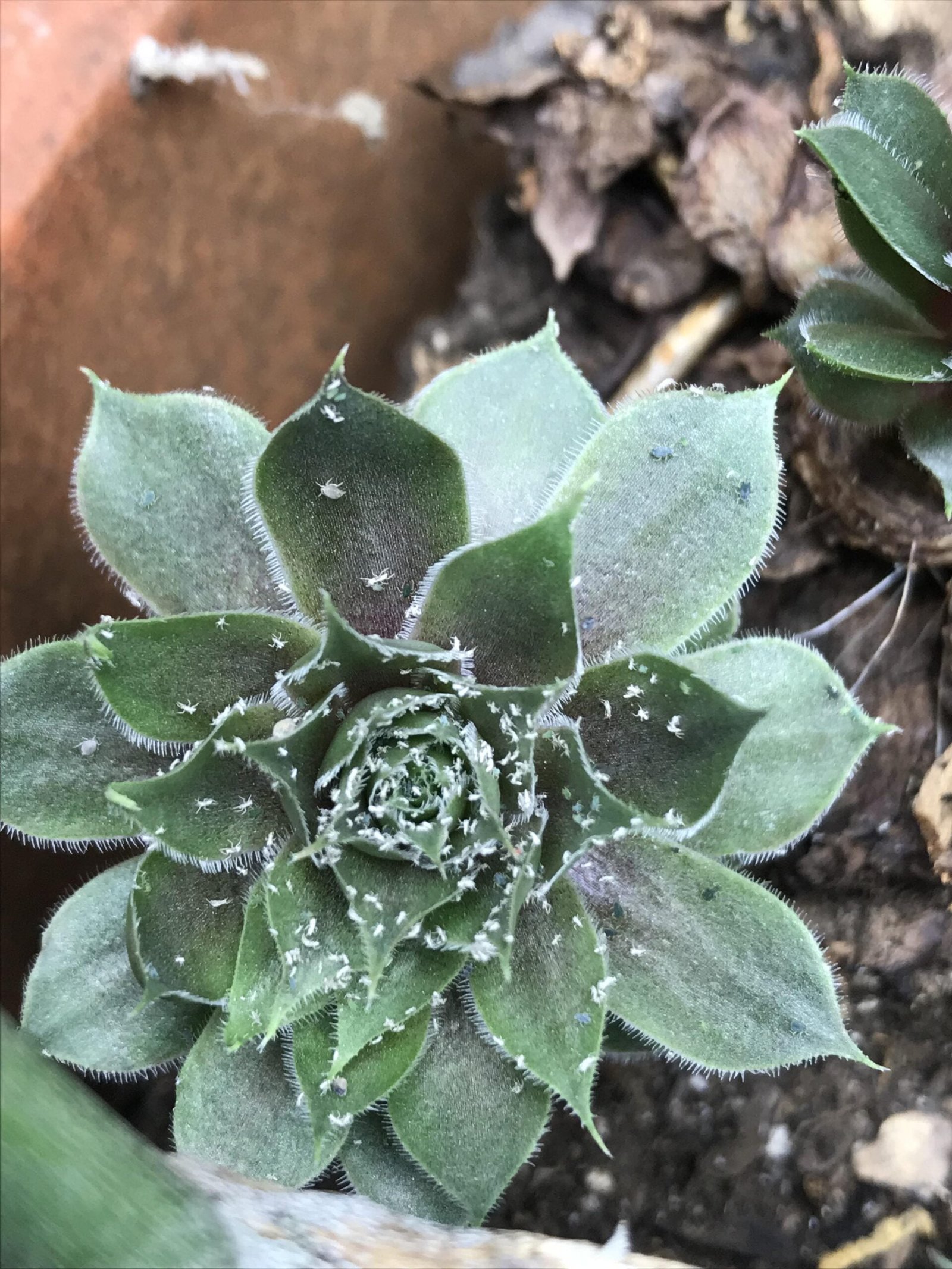
Animal damage – With a bitter taste and toxic compound, hens and chicks tend to be avoided by animals like deer, rabbits and rodents.
Planting Ideas for Hens and Chicks

The possibilities are endless for using these delightful little succulents around the home and garden! Here are some popular ideas:
- For gardens, incorporate them into rock gardens, green roofs, cracks in stone walls/pavers, raised beds or border edges.
- Grow in containers like hypertufa troughs, strawberry pots, hanging baskets or simple pots and dish gardens.
- Combine with other drought-tolerant companions like sedums, ice plants, cacti and agaves for an attractive, water-wise arrangement.
- Perfect for fairy gardens! Use them to create miniature succulent landscapes and living carpets. Kids love these plants!
- Include them in indoor succulent dish gardens and terrariums to add interesting form and texture.
So why not give hens and chicks a try? Few plants are as whimsical, hardy and easy to care for as these amazing little succulents. With shades of red, green, blue and purple, they’ll certainly enliven your garden or home!
Pingback: Easy Guide to Growing Charming Hens and Chicks ...
Pingback: Agave Plants: An Easy Guide to Growing Bold & Beautiful Varieties
Pingback: Succulents Care: 5 Steps for Healthy, Thriving Succulents
Pingback: Planting Succulents: 8 Tips for a Vibrant Succulent Garden
Pingback: Growing Hens and Chicks Plants in Gardens and Pots
Pingback: Foxglove Beardtongue: Growing Tips for Vibrant Blooms
Pingback: Vibrant Viburnum Shrubs : A Beginner’s Guide to Growing Successfully
Pingback: Monkey Tail Cactus : A Fun, Easy-Care Succulent - Gardener's School
Pingback: Mangaves: How to Grow Magnificent Agave Hybrids Successfully
Pingback: Fairy Castle Cactus : A Whimsical Addition to Your Succulent Collection